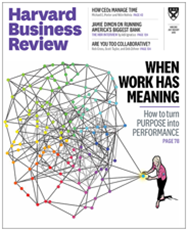Understanding purpose in organizations seems to be one of the most talked about issues – and opportunities – in companies today. A few weeks ago, 181 CEOs who are part of the prestigious Business Roundtable signed a new statement on the “Purpose of a Corporation.” No longer is simply driving shareholder value the top priority, they said. Rather, the statement recognized that the purpose of an organization in management is key in engaging and serving all stakeholders: customers, employees, suppliers, communities and shareholders.
Haven’t we always understood purpose in healthcare?
Many in health care would argue that we’ve always understood the purpose of our organizations in management. After all, can there be a higher purpose than serving our fellow human beings at some of the most vulnerable times in their lives? But recent research and insights into employee engagement and how purpose of the organization in management is key, I believe, gives us important things to think about.
“When Work Has Meaning” proclaimed the cover story of the July/August issue of the Harvard Business Review last summer. After reading the article, I had the good fortune to hear one of the article’s authors, Anjan Thakor, talk about the inspiration and compelling research findings in this important work.

“People who find meaning in their work don’t hoard their energy and dedication,” the authors emphasize. “They give them freely, defying conventional economic assumptions about self-interest. They do more – and they do it better.”
The authors’ most important, insightful message is that the power of purpose doesn’t just naturally happen and influence the work environment in organizations, even when that underlying purpose is as mighty as it is in health care. Leveraging purpose must be intentional, authentic and central to how work gets done in the organization. Following are Drs. Quinn and Thakor’s suggestions for making purpose a more powerful force in organizations.
Eight steps in making purpose more powerful
- Envision an inspired workforce
- Discover the purpose
- Recognize the need for authenticity
- Turn the authentic message into a constant message
- Stimulate individual learning
- Turn mid-level managers into purpose-driven leaders
- Connect the people to the purpose
- Unleash the positive energizers
This seminal work aligns with Stamp&Chase’s philosophy and approach to improving employee and customer/patient engagement in organizations. Over the coming months, we’ll explore several of the key steps in Drs. Quinn and Thakor’s model, highlighting how we’ve seen the power of purpose change the work environment and the relationship between bosses and employees in the health care organizations we’re privileged to work with.
